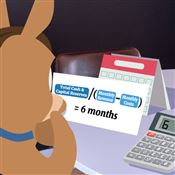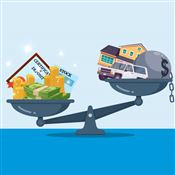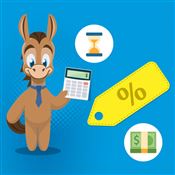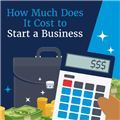Break Even Calculator
Wondering how many units you need to sell before you can finally make a profit? Use this calculator to find out your break-even point.
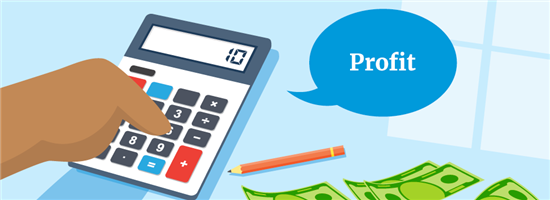 |
Starting a business is no joke, especially financially. You already have a lot of costs to consider just getting your idea off the ground.
Not only that but there's no guarantee you'll earn a profit right away, even when you make a sale.
But knowing your break-even point can make things easier. You'll know at what point you'll start making profits. To find yours more easily, use this handy break-even calculator.
How to Use the Break-Even Calculator
Using this break-even calculator is easy. Just follow these steps:
- Enter your variable cost per unit.
- Enter your selling price per unit.
- Enter your total fixed costs.
After that, click the "calculate" button and let the calculator do its thing. You should now see what your break-even point is in terms of revenue and units.
You may need to recalculate your break-even point from time to time. That way, it'd be more in line with your actual costs.
What Is Break-Even?
Break-even (aka break-even point or BEP) represents the number of units you must sell for revenue to equal costs.
It's when you're not making a profit or loss. You can also think of it as the point you need to reach to start earning a profit.
Let's say you sold enough units to break even. Great! That means any additional units you sell from there on will result in a profit.
On the other hand, selling fewer units than your break-even point will result in a loss instead, which is something you want to avoid.
How to Calculate Your Break-Even Point
Calculating your break-even point is easy. First, subtract your variable cost per unit from your selling price per unit. Then, divide your total fixed costs by the result.
Break-Even Point = Total Fixed Costs ÷ (Selling Price Per Unit - Variable Cost Per Unit)
For example, let's say you're selling your product for $18 per unit. While your variable cost per unit is $12 and your total fixed costs are around $42,000. So, your break-even point would be:
$42,000 ÷ ($18 - $12) = 7,000 units
This means you need to sell 7,000 units of your product just to break even. Any additional unit sold after that results in a profit.
Here's a table of what your break-even point would be under different prices and costs:
| Selling Price Per Unit | Variable Cost Per Unit | Total Fixed Costs | Break-Even Point (Units) |
|---|---|---|---|
| $25 | $15 | $25,000 | 2,500 |
| $44 | $24 | $40,000 | 2,000 |
| $51 | $40 | $55,000 | 5,000 |
| $36 | $32 | $70,000 | 17,500 |
| $72 | $62 | $85,000 | 8,500 |
| $110 | $90 | $100,000 | 5,000 |
Costs That Affect Your Break-Even Point
All business-related costs affect your break-even point. However, their impact depends on whether they're variable or fixed.
- Variable Costs
Variable costs change in direct proportion to the level of sales or production. An example would be utility usage, raw materials, and shipping costs. - Fixed Costs
Fixed costs remain constant, no matter how many units you sell or produce. Examples include salaries, rent, insurance, etc. - Mixed Costs
Mixed costs have variable and fixed components in them. An example would be the cost of employing a salesperson who's paid a salary (fixed) and a commission depending on the sales they make (variable).
How Pricing Affects Your Break-Even Point
The selling price of your products is a key element in determining your break-even point. In an ideal world, you'd want it to be really high to rake in more revenue for every unit sold.
However, if you price your product too high, customers are less likely to buy it. Even if you can reach your break-even point with only a few units, it means nothing if you can't sell your product.
To avoid that, set the price as high as possible without affecting the product's marketability. Make sure it's still above your variable cost per unit. Otherwise, you won't make any profit, no matter how many units you sell.
Ways To Lower Your Break-Even Point
You want your break-even point to be as low as possible. Because the lower it is, the easier it would be to make a profit.
Here's how you can do so:
- Increase your selling price
This will increase your revenue per unit sold as well as your contribution margin. However, this can negatively affect the demand for your product if you're not careful. Only do this if you're sure you can at least maintain the same level of sales. - Reduce your variable costs
Try looking for a cheaper alternative for your products without compromising the quality. If you're making them yourself, look for a more cost-efficient way to produce them. - Reduce your fixed costs
Look for a place or space that has cheaper rent. Research insurance costs and go with the most cost-efficient option.
Break-Even Price Strategy
Break-even pricing is a business strategy you can employ if you're looking to gather more market shares.
Here, you sell your products at a relatively low break-even price (just enough to cover your costs). This will potentially increase the demand for your products. Then, once you secure your desired market share, you can begin raising your prices.
The downside to this strategy is that it results in zero or minimal profits. It's also very risky as there's the possibility you might not be able to sell as many products as you projected.
So, only employ break-even pricing if you can afford to sustain months or even years of zero profits.
Break-Even Price = (Total Fixed Costs ÷ Sales or Production Volume) + Variable Cost Per Unit
Limitations of Break-Even Analysis
While break-even analysis is a useful tool, it still has its limitations. For one, it assumes that your costs (fixed and variable) will remain the same over time.
This isn't usually the case in reality. Your costs may change due to several factors such as inflation and changes in market conditions.
For example, your landlord might increase the rent next month. If you don't recalculate your break-even point, it won't reflect the change in your costs.
Aside from that, it also presents the relationship between costs and revenue in a very simplified manner. It ignores external factors like market demand, changing customer preferences, and competition. All of these can significantly impact your sales.
Instead of solely relying on it, it's better to combine break-even analysis with other tools. This will give you a more comprehensive and accurate picture of your company's performance.
Bottom Line
Your break-even point is a great measure of when you can really start earning a profit. Any units sold beyond it means you're already earning a profit.
Once you know your break-even point, you can start adjusting your pricing model to improve your business's profitability.
Write to Patrick Santos at feedback@creditdonkey.com. Follow us on Twitter and Facebook for our latest posts.
|
|
| ||||||
|
|
|



